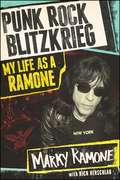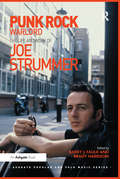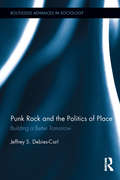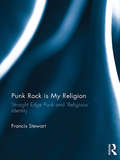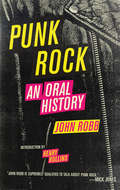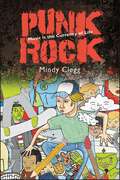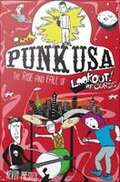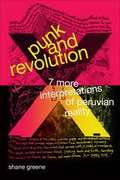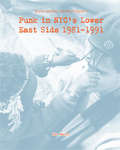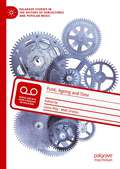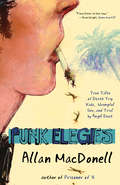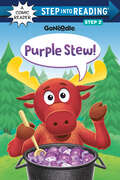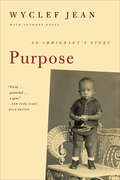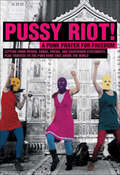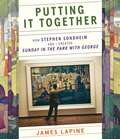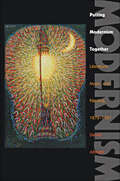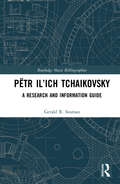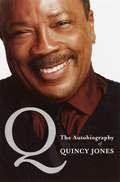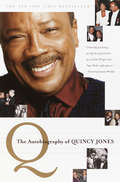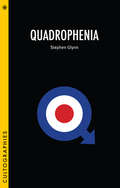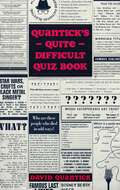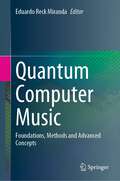- Table View
- List View
Punk Rock Blitzkrieg
by Marky Ramone Richard HerschlagThe inside story behind one of the most revered bands in music history during the early days of punk rock in New York, from legendary drummer Marky Ramone.Rolling Stone ranked the Ramones at #26 on its list of the "100 Greatest Artists of All Time." They received a Grammy Lifetime Achievement Award in 2011 and were inducted into the Rock and Roll Hall of Fame in 2002. And Marky Ramone played a major part in this success--his "blitzkrieg" style of drumming drove the sound the Ramones pioneered. Now, fans can get the inside story. Before he joined the Ramones, Marc Bell was already a name in the New York music scene. But when he joined three other tough misfits, he became Marky Ramone, and the rhythm that came to epitomize punk was born. Having outlived his bandmates, Marky is the only person who can share the secrets and stories of the Ramones' improbable rise from obtuse beginnings to induction into the Rock and Roll Hall of Fame. But it wasn't all good times and hit songs, and Marky doesn't shy away from discussing his own struggles, including the addiction to alcohol that led him to be temporarily kicked out of the band. From the cult film Rock 'n' Roll High School through "I Wanna Be Sedated" through his own struggle with alcoholism, Marky Ramone sets the record straight, painting an unflinching picture of the dysfunction behind the band that changed a generation. With exclusive behind-the-scenes photos, Punk Rock Blitzkrieg is both a cultural history of punk and a stirring story that millions of fans have been waiting for.
Punk Rock Entrepreneur: Running a Business without Losing Your Values
by Caroline MooreDo you have an idea for something that you want to share with the world but don't know where to start? Want to make a living without selling your soul? Have a business plan but can't afford to buy anything up front? This book is for you.Punk Rock Entrepreneur is a guide to launching your own business using DIY methods that allow you to begin from wherever you are, right now. Caroline Moore talks (and illustrates!) you through the why and how of business operations that she learned over years booking bands, organizing fests, sleeping on couches, and making a little go a long way. Engaging stories and illustrations show you the ropes, from building a network and working distribution channels to the value of community and being authentic.With first hand accounts from touring bands and small business owners, this book gives you the inspiration and down-to-earth advice you'll need to get started working for yourself.
Punk Rock Warlord: the Life and Work of Joe Strummer (Ashgate Popular and Folk Music Series)
by Barry J. Faulk Brady HarrisonPunk Rock Warlord explores the relevance of Joe Strummer within the continuing legacies of both punk rock and progressive politics. It is aimed at scholars and general readers interested in The Clash, punk culture, and the intersections between pop music and politics, on both sides of the Atlantic. Contributors to the collection represent a wide range of disciplines, including history, sociology, musicology, and literature; their work examines all phases of Strummer’s career, from his early days as ’Woody’ the busker to the whirlwind years as front man for The Clash, to the ’wilderness years’ and Strummer’s final days with the Mescaleros. Punk Rock Warlord offers an engaging survey of its subject, while at the same time challenging some of the historical narratives that have been constructed around Strummer the Punk Icon. The essays in Punk Rock Warlord address issues including John Graham Mellor’s self-fashioning as ’Joe Strummer, rock revolutionary’; critical and media constructions of punk; and the singer’s complicated and changing relationship to feminism and anti-racist politics. These diverse essays nevertheless cohere around the claim that Strummer’s look, style, and musical repertoire are so rooted in both English and American cultures that he cannot finally be extricated from either.
Punk Rock and the Politics of Place: Building a Better Tomorrow (Routledge Advances in Sociology)
by Jeffrey S. Debies-CarlThis book is an ethnographic investigation of punk subculture as well as a treatise on the importance of place: a location with both physical form and cultural meaning. Rather than examining punk as a "sound" or a "style" as many previous works have done, it investigates the places that the subculture occupies and the cultural practices tied to those spaces. Since social groups need spaces of their own to practice their way of life, this work relates punk values and practices to the forms of their built environments. As not all social groups have an equal ability to secure their own spaces, the book also explores the strategies punks use to maintain space and what happens when they fail to do so.
Punk Rock is My Religion: Straight Edge Punk and 'Religious' Identity
by Francis StewartAs religion has retreated from its position and role of being the glue that holds society together, something must take its place. Utilising a focused and detailed study of Straight Edge punk (a subset of punk in which adherents abstain from drugs, alcohol and casual sex) Punk Rock is My Religion argues that traditional modes of religious behaviours and affiliations are being rejected in favour of key ideals located within a variety of spaces and experiences, including popular culture. Engaging with questions of identity construction through concepts such as authenticity, community, symbolism and music, this book furthers the debate on what we mean by the concepts of ‘religion’ and ‘secular’. Provocatively exploring the notion of salvation, redemption, forgiveness and faith through a Straight Edge lens, it suggests that while the study of religion as an abstraction is doomed to a simplistic repetition of dominant paradigms, being willing to examine religion as a lived experience reveals the utility of a broader and more nuanced approach.
Punk Rock: An Oral History
by John Robb Lars FredriksenVibrant and volatile, the punk scene left an extraordinary legacy of music and cultural change, and this work talks to those who cultivated the movement, weaving together their accounts to create a raw and unprecedented oral history of punk in the United Kingdom. From the Clash, Crass, Henry Rollins, and John Lydon to the Sex Pistols, the Stranglers, and the Buzzcocks, this reference features more than 150 interviews that encapsulate the most thrilling wave of rock and roll pop culture ever seen. Ranging from its widely debated roots in the late 1960s to its enduring influence on modern bands, fashion, and culture, this history brings to life the energy and anarchy as no other book has done.
Punk Rock: Music Is the Currency of Life
by Mindy CleggPunk Rock examines the history of punk rock in its totality. Punk became a way of thinking about the role of culture and community in modern life. Punks forged real alternatives to producing popular music and built community around their music. This punk counterpublic, forged in the late Cold War period, spanned the globe and has provided a viable cultural alternative to alienated young people over the years. This book starts with the rise of modernity and places the emergence of punk as a musical subculture into that longer historical narrative. It also reveals how punk itself became a contested terrain, as participants sought to imbue the production of music with greater meaning. It highlights all styles of punk and its wide variety of creators around the world, including from the LGBTQ+, feminist, and alternative communities. Punk was and remains a transnational phenomenon that influences music production and shapes our understanding of culture’s role in community building.
Punk USA
by Kevin PrestedThrough hundreds of exclusive and original interviews, Punk USA documents an empire that was built overnight as Lookout sold millions of records and rode the wave of the second coming of punk rock until it all came crashing down. In 1987, Lawrence Livermore founded independent punk label Lookout Records to release records by his band The Lookouts. Forming a partnership with David Hayes, the label released some of the most influential recordings from California's East Bay punk scene, including a then-teenaged Green Day. Originally operating out of a bedroom, Lookout created "The East Bay Punk sound," with bands such as Crimpshrine, Operation Ivy, The Mr. T Experience, and many more. The label helped to pave the way for future punk upstarts and as Lookout grew, young punk entrepreneurs used the label as a blueprint to try their hand at record pressing. As punk broke nationally in the mid 90s the label went from indie outfit to having more money than it knew how to manage.
Punk and Revolution: Seven More Interpretations of Peruvian Reality
by Shane GreeneIn Punk and Revolution Shane Greene radically uproots punk from its iconic place in First World urban culture, Anglo popular music, and the Euro-American avant-garde, situating it instead as a crucial element in Peru's culture of subversive militancy and political violence. Inspired by José Carlos Mariátegui's Seven Interpretive Essays on Peruvian Reality, Greene explores punk's political aspirations and subcultural possibilities while complicating the dominant narratives of the war between the Shining Path and the Peruvian state. In these seven essays, Greene experiments with style and content, bends the ethnographic genre, and juxtaposes the textual and visual. He theorizes punk in Lima as a mode of aesthetic and material underproduction, rants at canonical cultural studies for its failure to acknowledge punk's potential for generating revolutionary politics, and uncovers the intersections of gender, ethnicity, class, and authenticity in the Lima punk scene. Following the theoretical interventions of Debord, Benjamin, and Bakhtin, Greene fundamentally redefines how we might think about the creative contours of punk subculture and the politics of anarchist praxis.
Punk in NYC's Lower East Side 1981-1991: Scene History Series, Vol 1 (Scene History Ser.)
by Ben NaderDrawing on both archival documents and original interviews, this zine explores the music of the era's bands, including Bad Brains, Cro-Mags, Agnostic Front, False Prophets, Urgent Fury, No Thanks, and Reagan Youth. At the same time, the scene is situated within the broader social context, from the election of Ronald Reagan to the Tompkins Square Riots. Woven throughout is the tragic story of New York City's most legendary anarcho-punk, Reagan Youth's Dave Insurgent.
Punk, Ageing and Time (Palgrave Studies in the History of Subcultures and Popular Music)
by Laura Way Matt GrimesTo date there has been no plotting of punk scholarship which speaks to ‘time’, yet there are some clear bodies of work pertaining to particular issues relevant to it, including ageing and/or the life course and punk, memory and/or nostalgia and punk, ‘punk history’, and archiving and punk. Punk, Ageing and Time is therefore a timely (pun intended) book. What this edited collection does for the first time is bring together contemporary investigations and discussions specifically around punk and ageing and/or time, covering areas such as: punk and ageing; the relationship between temporality and particular concepts relevant to punk (such as authenticity, DIY, identity, resistance, spatiality, style); and punk memory, remembering and/or forgetting. Multidisciplinary in nature, this book considers areas which have received very little to no academic attention previously.
PunkElegies
by Allan MacdonellPunk Elegies arrives like a chemically unstable mixture of Richard Yates and Damon Runyon. Set along Hollywood Boulevard at the birth of punk and the death of the 1970s, the thirty-three melancholic, comic laments of Punk Elegies are a mesmerizing concoction of delusion and revelation. A cultural moment, a marriage and one young man’s mind and soul spiral through a series of boundless possibilities and arrive at a harrowing finality. In the end, on the spin cycle of destiny, MacDonell circles alone, naked and bewildered in the labyrinth of a pre-AIDS bathhouse inferno. The first sunrise of the rest of his life dares him to step outside.
Punks in Peoria: Making a Scene in the American Heartland (Music in American Life #1)
by Jonathan Wright Dawson BarrettPunk rock culture in a preeminently average town Synonymous with American mediocrity, Peoria was fertile ground for the boredom- and anger-fueled fury of punk rock. Jonathan Wright and Dawson Barrett explore the do-it-yourself scene built by Peoria punks, performers, and scenesters in the 1980s and 1990s. From fanzines to indie record shops to renting the VFW hall for an all-ages show, Peoria's punk culture reflected the movement elsewhere, but the city's conservatism and industrial decline offered a richer-than-usual target environment for rebellion. Eyewitness accounts take readers into hangouts and long-lost venues, while interviews with the people who were there trace the ever-changing scene and varied fortunes of local legends like Caustic Defiance, Dollface, and Planes Mistaken for Stars. What emerges is a sympathetic portrait of a youth culture in search of entertainment but just as hungry for community—the shared sense of otherness that, even for one night only, could unite outsiders and discontents under the banner of music. A raucous look at a small-city underground, Punks in Peoria takes readers off the beaten track to reveal the punk rock life as lived in Anytown, U.S.A.
Purple Stew! (Step into Reading)
by Random HouseDance, laugh, and learn to read with this GoNoodle Step 2 Comic Reader which embraces silly ideas and ingredients!Moose Fabio and his friends love to use their imagination when they cook up a bowl of purple stew—what will you add to the pot? Introduce readers to some of their favorite GoNoodle characters in this new comic reader based on &‘Purple Stew&’, the popular video and song! Comic Readers are told almost entirely in action-packed dialogue! Simple, graphic, paneled layouts introduce emergent readers to the joy of comics.Step 2 Comic Readers use basic vocabulary and short sentences to tell simple stories; for children who recognize familiar words and can sound out new words with help.
Purpose: An Immigrant's Story
by Anthony Bozza Wyclef JeanPurpose is Wyclef Jean’s powerful story of a life rooted in struggle, soul-searching, art, and survival.In his own voice the multi-platinum musician and producer shares everything, from his childhood in Haiti to his rise to the top of the American music scene. For the first time ever, Wyclef reveals the behind-the-scenes story of the Fugees, including his partnership with Lauryn Hill and Pras Michel, the details of their award-winning album The Score, and the solo career that followed.For fans of early Wyclef efforts like The Carnival or later albums like From the Hut, To the Projects, To the Mansion—and for fans of books like Jay-Z’s Decoded or Russell Simmons’ Super Rich—Wyclef’s Purpose is an inspiring, one-of-a-kind look at one of the world’s most talented artists.
Pussy Riot!: A Punk Prayer for Freedom
by Pussy RiotLetters from prison, songs, poems, and courtroom statements, plus tributes to the Russian punk band that shook the world.On February 21, 2012, five members of a Russian feminist punk collective Pussy Riot staged a performance in the Cathedral of Christ the Savior in Moscow. Dressed in brightly colored tights and balaclavas, they performed their “Punk Prayer” asking the Virgin Mary to drive out Russian president Vladimir Putin from the church. After just forty seconds, they were chased out by security. Once a retooled video of the events circulated on YouTube (edited to seem much longer than the actual performance), the state was riled into action. Three members of the collective, Maria Alyokhina, Nadezhda Tolokonnikova, and Yekaterina Samutsevich, known as Masha, Nadya, and Katya, were arrested and charged with felony hooliganism motivated by religious hatred, an offense carrying a sentence of up to seven years.As their trial unfolded, these young women became global feminist icons, garnering the attention and support of activists and artists around the world, including Madonna, Paul McCartney, and Sting, as well as contributors to this book: Yoko Ono, Johanna Fateman, Karen Finley, Justin Vivian Bond, Eileen Myles, and JD Samson. The Internet exploded with petitions, music videos, and calls to action, and as the guilty verdict was anticipated, Pussy Riot responded with articulate, unwavering courtroom statements, calling for freedom of expression, an end to economic and gender oppression, and a separation of church and state. They were sentenced to two years in prison, and inspired a global movement. Collected here are the words that roused the world.
Putting It Together: How Stephen Sondheim And I Created Sunday In The Park With George
by James LapinePutting It Together chronicles the two-year odyssey of creating the iconic Broadway musical Sunday in the Park with George. In 1982, James Lapine, at the beginning of his career as a playwright and director, met Stephen Sondheim, nineteen years his senior and already a legendary Broadway composer and lyricist. Shortly thereafter, the two decided to write a musical inspired by Georges Seurat’s nineteenth-century painting A Sunday Afternoon on the Island of La Grande Jatte. Through conversations between Lapine and Sondheim, as well as most of the production team, and with a treasure trove of personal photographs, sketches, script notes, and sheet music, the two Broadway icons lift the curtain on their beloved musical. Putting It Together is a deeply personal remembrance of their collaboration and friendship and the highs and lows of that journey, one that resulted in the beloved Pulitzer Prize-winning classic.
Putting Modernism Together: Literature, Music, and Painting, 1872–1927 (Hopkins Studies in Modernism)
by Daniel AlbrightA powerful introduction to modernism and the creative arts it inspired.How do you rationally connect the diverse literature, music, and painting of an age? Throughout the modernist era—which began roughly in 1872 with the Franco-Prussian War, climaxed with the Great War, and ended with a third catastrophe, the Great Depression—there was a special belligerence to this question. It was a cultural period that envisioned many different models of itself: to the Cubists, it looked like a vast jigsaw puzzle; to the Expressionists, it resembled a convulsive body; to the Dadaists, it brought to mind a heap of junk following an explosion. In Putting Modernism Together, Daniel Albright searches for the center of the modernist movement by assessing these various artistic models, exploring how they generated a stunning range of creative work that was nonetheless wound together aesthetically, and sorting out the cultural assumptions that made each philosophical system attractive. Emerging from Albright's lectures for a popular Harvard University course of the same name, the book investigates different methodologies for comparing the evolution and congruence of artistic movements by studying simultaneous developments that occurred during particularly key modernist years. What does it mean, Albright asks, that Joseph Conrad's Heart of Darkness, published in 1899, appeared at the same time as Claude Debussy's Nocturnes—beyond the fact that the word "Impressionist" has been used to describe each work? Why, in 1912, did the composer Arnold Schoenberg and the painter Vassily Kandinsky feel such striking artistic kinship? And how can we make sense of a movement, fragmented by isms, that looked for value in all sorts of under- or ill-valued places, including evil (Baudelaire), dung heaps (Chekhov), noise (Russolo), obscenity (Lawrence), and triviality (Satie)? Throughout Putting Modernism Together, Albright argues that human culture can best be understood as a growth-pattern or ramifying of artistic, intellectual, and political action. Going beyond merely explaining how the artists in these genres achieved their peculiar effects, he presents challenging new analyses of telling craft details which help students and scholars come to know more fully this bold age of aesthetic extremism.
Pëtr Il’ich Tchaikovsky: A Research and Information Guide (Routledge Music Bibliographies)
by Gerald R. SeamanPëtr Il’ich Tchaikovsky: A Research and Information Guide is an annotated bibliography of substantial, relevant published resources relating to the Russian composer. Generally regarded as one of the most remarkable composers of the second half of the nineteenth century, Tchaikovsky is unique in that he was the first outstanding Russian composer to receive a professional musical education, being one of the first students to graduate from the newly opened St. Petersburg Conservatory. Composer of six symphonies, concertos, orchestral works, eight major operas, three ballets, and many chamber, keyboard and vocal works, he also composed important sacred music, which is currently being reassessed by contemporary Russian musicologists who are able to examine materials previously restricted or inaccessible during the Soviet period. Like his colleagues in St. Petersburg, Tchaikovsky was deeply interested in Russian folk song, which plays an important part in his works. This volume evaluates the major studies written about the composer, incorporating new information that has appeared in literary publications, articles and reviews.
Q: The Autobiography of Quincy Jones
by Quincy JonesQuincy Jones has won multiple grammy awards. He has been acknowledged as a masterful jazz, rock, and funk musician, has created some of the most memorable film scores of the pop era, and has sat at the production controls for numerous landmark albums, including Michael Jackson's Thriller, the biggest-selling long-player of all time.
Q: The Autobiography of Quincy Jones
by Quincy JonesThe first entry in a multivolume set that will be essential reading for aspiring producers and artists everywhere, Q on Producing presents the master's approach to making music.
Quadrophenia (Cultographies)
by Stephen Glynn1964: Mods clash with Rockers in Brighton, creating a moral panic. 1973: ex-Mod band The Who release Quadrophenia, a concept album following young Mod Jimmy Cooper to the Brighton riots and beyond. 1979: Franc Roddam directs Quadrophenia, a film based on Pete Townshend's album narrative; its cult status is immediate. 2013: almost fifty years on from Brighton, this first academic study explores the lasting appeal of 'England's Rebel Without a Cause'. Investigating academic, music, press, and fan-based responses, Glynn argues that the 'Modyssey' enacted in Quadrophenia intrigues because it opens a hermetic subculture to its social-realist context; it enriches because it is a cult film that dares to explore the dangers in being part of a cult; it endures because of its 'emotional honesty', showing Jimmy as failing, with family, job, girl, and group; it excites because we all know that, at some point in our lives, 'I was there!'
Quantick's Quite Difficult Quiz Book
by David Quantick'Best quiz book ever'HARRY HILL'Quantick is the Captain Beefheart of quizzing'MARK BILLINGHAM'The antidote to every deathly dull pub quiz you've ever been to. This is how a quiz book should be written - where having fun is the most important outcome'GARY WIGGLESWORTH, author of The Book Lover's Quiz BookDistinctive, unusual, difficult, but spectacularly entertaining, this quiz book is to other pub quizzes what Trivial Pursuit was to Ludo, what TheHitch-Hiker's Guide to the Galaxy is like to the Rhyl phone directory, and what the Rolls-Royce Silver Ghost is like compared to a kid's scooter. Loads better.David Quantick works regularly with Armando Iannucci, including on the new HBO series, Avenue 5. He won an Emmy as part of the writing team on Veep, a BAFTA for Harry Hill's TV Burp and a Writers' Guild Award for The Thick of It. For over fifteen years, David has also hosted his own very popular quizzes at festivals, events, pubs, clubs, cinemas and in tents: the quizzes range is broad and the questions are tricky. They're not about statistics, there's no sport, the picture rounds are conceptual, and there's sometimes a round called 'Martin Amis Character or Blur Song'. Each quiz is funny and entertaining even if you don't know the answers. The quizzes are informative and opinionated. In some ways, they're like stand-up with questions. This is a book based on David's excellent live quizzes, described by many people as 'quite difficult'.But they are quizzes. Quite difficult quizzes that tax the brain and make it go in directions it didn't know it could. That's not to say the questions are fiendishly scientific and packed with questions about dates and the periodic table. They're about books and music, movies and actors, strange events and interesting quotes. You don't leave a Quantick quiz knowing how many times Spurs have won the League, but you may know how many Shirleys have sung a Bond theme or how George V made the front page of The Times.The effectiveness of David's quizzes is down to their unusual variety and almost stream-of-consciousness leaps and bounds of factual imagination. There's not even much point in cheating, because the answers often require mental agility as well as just knowing where Calais is (it's in France, but it wasn't always, even when it was).David's quiz book includes twenty-five main quizzes, four Christmas quizzes and four specialist quizzes, so thirty-three quizzes in total. Entertaining in its own right, this is also a conceptual yet very practical guide to staging excellent quizzes of your own.
Quantick's Quite Difficult Quiz Book
by David Quantick'Best quiz book ever'HARRY HILL'Quantick is the Captain Beefheart of quizzing'MARK BILLINGHAM'The antidote to every deathly dull pub quiz you've ever been to. This is how a quiz book should be written - where having fun is the most important outcome'GARY WIGGLESWORTH, author of The Book Lover's Quiz BookDistinctive, unusual, difficult, but spectacularly entertaining, this quiz book is to other pub quizzes what Trivial Pursuit was to Ludo, what The Hitch-Hiker's Guide to the Galaxy is like to the Rhyl phone directory, and what the Rolls-Royce Silver Ghost is like compared to a kid's scooter. Loads better.David Quantick works regularly with Armando Iannucci, including on the new HBO series, Avenue 5. He won an Emmy as part of the writing team on Veep, a BAFTA for Harry Hill's TV Burp and a Writers' Guild Award for The Thick of It. For over fifteen years, David has also hosted his own very popular quizzes at festivals, events, pubs, clubs, cinemas and in tents: the quizzes range is broad and the questions are tricky. They're not about statistics, there's no sport, the picture rounds are conceptual, and there's sometimes a round called 'Martin Amis Character or Blur Song'. Each quiz is funny and entertaining even if you don't know the answers. The quizzes are informative and opinionated. In some ways, they're like stand-up with questions. This is a book based on David's excellent live quizzes, described by many people as 'quite difficult'.But they are quizzes. Quite difficult quizzes that tax the brain and make it go in directions it didn't know it could. That's not to say the questions are fiendishly scientific and packed with questions about dates and the periodic table. They're about books and music, movies and actors, strange events and interesting quotes. You don't leave a Quantick quiz knowing how many times Spurs have won the League, but you may know how many Shirleys have sung a Bond theme or how George V made the front page of The Times.The effectiveness of David's quizzes is down to their unusual variety and almost stream-of-consciousness leaps and bounds of factual imagination. There's not even much point in cheating, because the answers often require mental agility as well as just knowing where Calais is (it's in France, but it wasn't always, even when it was).David's quiz book includes twenty-five main quizzes, four Christmas quizzes and four specialist quizzes, so thirty-three quizzes in total. Entertaining in its own right, this is also a conceptual yet very practical guide to staging excellent quizzes of your own.
Quantum Computer Music: Foundations, Methods and Advanced Concepts
by Eduardo Reck MirandaThis book explores music with respect to quantum computing, a nascent technology that is advancing rapidly. There is a long history of research into using computers for music since the 1950s. Nowadays, computers are essential for the music economy. Therefore, it is very likely that quantum computers will impact the music industry in the time to come. Consequently, a new area of research and development is emerging: Quantum Computer Music. This unprecedented book presents the new field of Quantum Computer Music. It introduces the fundamentals of quantum computing for musicians and the latest developments by pioneering practitioners.
